If you have ever found your Peace Lily looking sad and droopy because it was overwatered, you are not alone – this is a common issue. Overwatering a Peace Lily can cause the plant to start wilting and eventually die. In this article, we will discuss how to fix an overwatered Peace Lily, as well as answer some frequently asked questions about this issue. We will also discuss some useful tips for preventing overwatering in the future. With a little know-how and careful attention, your Peace Lily can be happy and healthy again!
Why Is Your Overwatered Peace Lily Waterlogged?
Watering More Than Needed
Peace Lilies are very sensitive to overwatering. They do not like having their soil saturated for too long, which can cause it to become waterlogged.

When the soil is waterlogged, air bubbles can’t reach the roots of the plant and it becomes much harder for the Peace Lily to take up nutrients from its environment. This will make the plant look wilted and lifeless.
Not Checking the Soil Before Watering
Another common problem is not checking the soil moisture level of the Peace Lily before watering. It is important to make sure that the top layer of the soil is dry to the touch, otherwise you can risk over-watering it.
Your Container Is Too Large
It is also possible that the container your Peace Lily is in is too large for its size. If this is the case, it will take much longer for the soil to dry out before you need to water it again. This can increase the chances of overwatering and cause your Peace Lily to become waterlogged.
The Pot Material Is Wrong
Lastly, it is important to make sure the material of your pot is suitable for your Peace Lily. Certain materials like terracotta can absorb more water than others and will take a longer time to dry out. If you have a Peace Lily in an unsuitable material pot, it can be helpful to repot it into a non-absorbent container that will allow the excess water to escape much easier.
The Drainage of the Soil Is Inadequate
It is also important to check the drainage of your soil. If it is too dense, water can become trapped and cause root rot and other problems. To fix this issue, you can add some additional drainage material such as small stones or broken pieces of terracotta to help water drain out more easily.
Poor Drainage of the Pot
Finally, you should also check the pot of your Peace Lily to make sure it is draining properly. If the holes in the bottom of the container are blocked or too small, water can become trapped and cause overwatering. You can add more drainage material or use a drill bit to make larger holes for better drainage.[1]
Not Draining the Drip Tray Regularly
It is also important to remember to regularly drain the drip tray below your pot. If water accumulates in this tray, it can cause it to overflow into the soil and cause overwatering.
Too Much Humidity in the Air
Finally, it is possible that the air around your Peace Lily is too humid. This can make it difficult for the water to evaporate from the soil and cause overwatering. To reduce humidity, you can try using a dehumidifier or open a window in the room to let in some fresh air.
Too Little Sunshine
Peace Lilies require indirect sunlight for at least a few hours each day. Insufficient amounts of sunshine can cause the plant to become weak and more susceptible to overwatering.
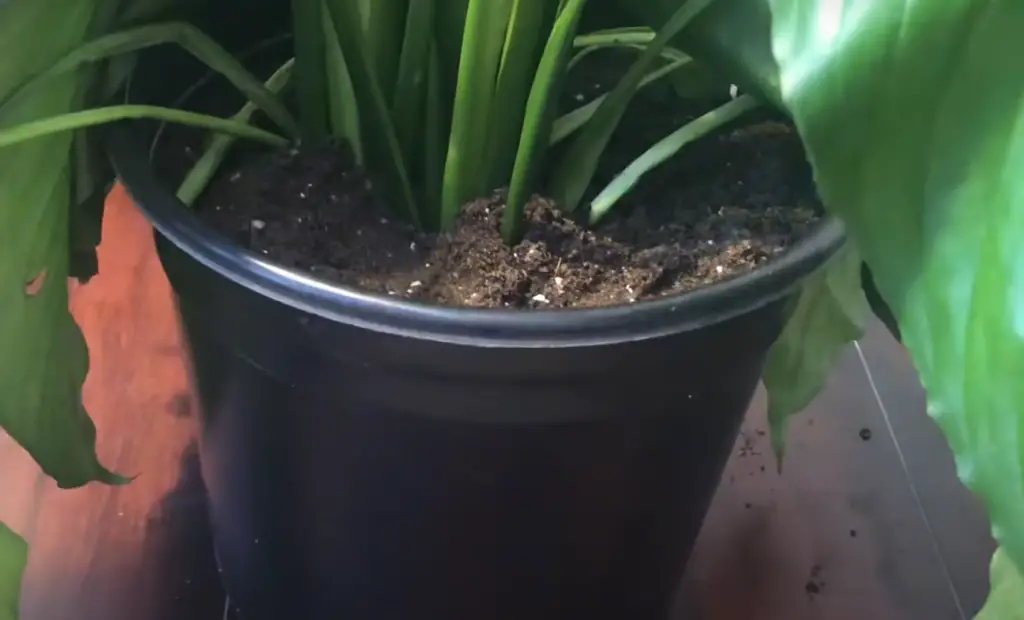
If your Peace Lily is in a low-light area, it may be helpful to move it to an area with more light or place a grow light nearby.
Temperature
The temperature of the room where your Peace Lily is kept can also affect its ability to take up water. If the temperature is too low, it may not be able to take up enough moisture from the soil and can cause overwatering.
Factors That Contribute To the Symptoms of Overwatering
Root Rot
When waterlogged soil is left for too long, it can cause root rot, which will lead to wilting and yellowing of the leaves. Root rot can be difficult to fix without proper care and attention, so it is important to act quickly if you think your Peace Lily may have root rot.[2]
Lack of Nutrients
An overwatered Peace Lily may also be lacking in nutrients. This can happen when air bubbles are unable to reach the roots and the plant is not able to take up enough nutrients from its environment. You can give your Peace Lily a nutrient boost by adding some fertilizer or compost to the soil.
Fungus Growth
Excess moisture in the soil can also lead to fungal growth. Fungus can spread and cause further damage to the plant, leading to wilting leaves or yellow spots on the leaves. If you suspect your Peace Lily may have a fungus, it is important to act quickly by removing affected parts of the plant and treating it with an appropriate fungicide.
How To Revive an Overwatered and Swollen Peace Lily
Repot Water Logged Peace Lily in a New Pot
To help revive your overwatered Peace Lily, it is important to repot the plant in a new pot. This will help the excess water drain out much easier and allow air bubbles to reach the roots again.
Before repotting, make sure you have removed as much of the old soil from around the root ball as possible and check for any signs of root rot or disease. You should then place the plant in a new pot that is no more than two inches larger than its current size and fill it with fresh soil.[4]
Help Your Soil Dry Out
Once your Peace Lily is in a new pot, it is important to help the soil dry out. This can be done by ensuring the container has adequate drainage holes and adding some additional drainage material such as small stones or pieces of broken terracotta.
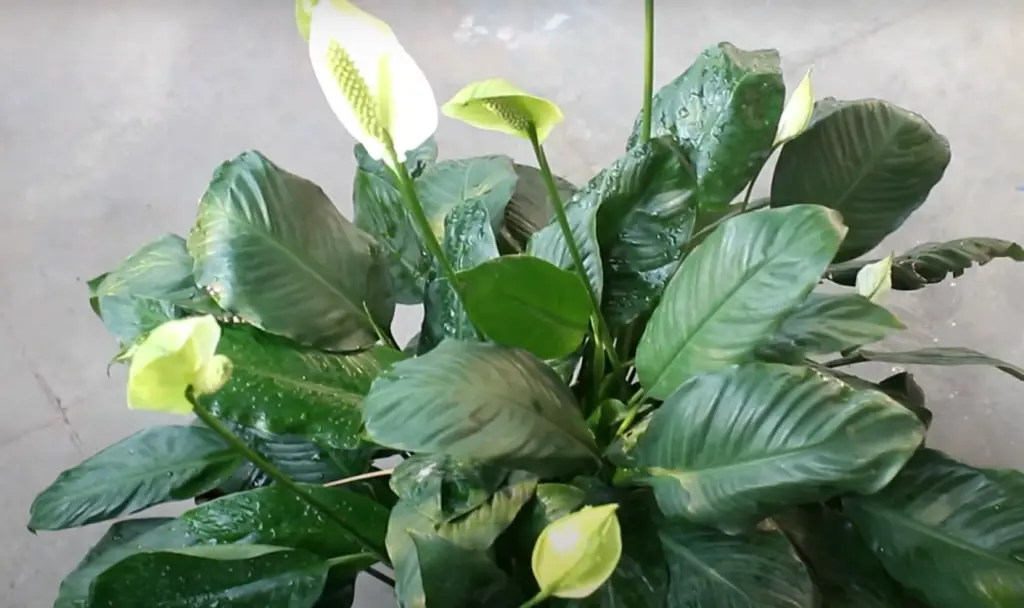
You can also use a fan to help circulate air around the pot and speed up the drying process. Alternatively, you could take your Peace Lily outside in direct sunlight for a few hours to help dry out the soil much faster.
Stop watering the plant
Finally, it is important to stop watering your Peace Lily until the soil has dried out completely. You should also be careful not to overfertilize the plant as this can make it more susceptible to overwatering.
Treat root rot disease
In some cases, root rot can become severe enough to cause permanent damage to your Peace Lily. If this is the case, you may need to treat the plant with an appropriate fungicide or insecticide.
Cut off affected leaves and stems
If your Peace Lily is showing signs of damage from overwatering, it may be necessary to remove some of the affected leaves or stems. This will help stop the spread of any fungal growth and allow more air bubbles to reach the roots.
Once you have removed the damaged parts, make sure you keep an eye on your Peace Lily for any further signs of damage or disease. With the right care and attention, your Peace Lily should be able to recover from overwatering and continue growing healthy and strong.[4]
Follow a good peace lily care plan
Finally, the best way to prevent overwatering your Peace Lily is to follow a good care plan. This should include keeping the soil slightly moist but not soggy and providing enough space for air bubbles to reach the roots. It is also important to ensure that the plant has access to indirect sunlight, adequate drainage material in the pot, and regular temperatures. By following these tips, you should be able to avoid overwatering your peace lily and keep it looking and feeling its best.
How to Prevent Root Rot?
Root rot is a common problem with Peace Lilies and can be caused by overwatering, lack of air circulation or too much humidity in the environment. To prevent root rot, it is important to keep your soil slightly moist but not soggy, ensure that water can drain properly from the pot and avoid overcrowding multiple plants in one container.
It is also important to make sure your Peace Lily has enough space in its pot and that the pot has adequate drainage holes. Additionally, it can be helpful to keep the environment relatively dry and provide airflow to the roots of your plant. With proper care and a regular maintenance plan, you should be able to prevent root rot in your Peace Lily.[5]
Signs of Overwatered Peace Lily Vs Under Watered Peace Lily
It can be difficult to tell the difference between an overwatered and underwatered Peace Lily. Generally, both will have wilting leaves and yellowing of the leaves. However, there are some subtle differences that may help you determine which one your plant is suffering from.
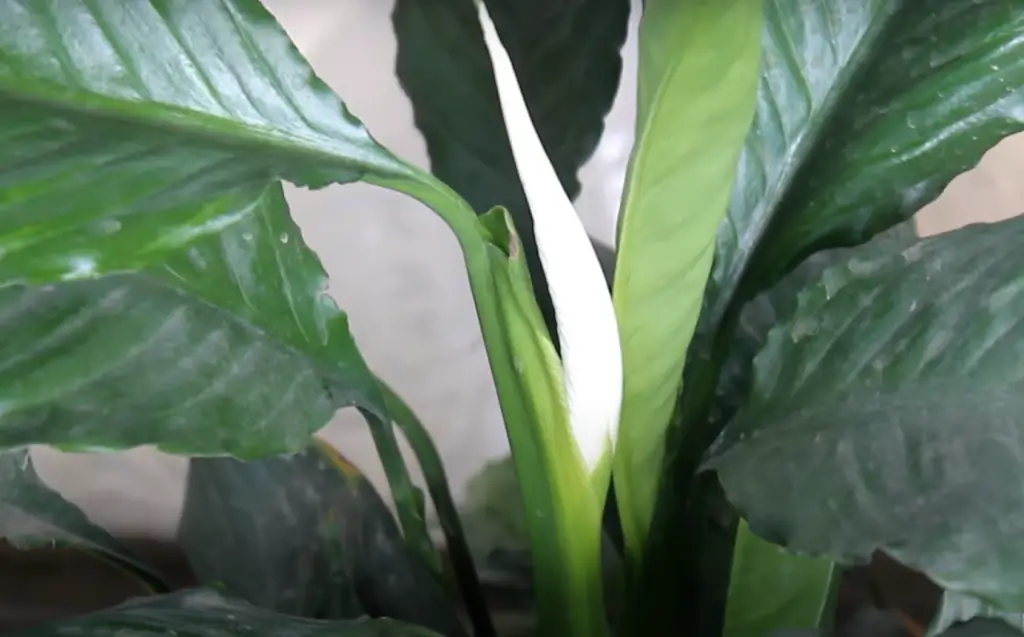
An overwatered Peace Lily will often have swollen stems or leaves and may have a ‘mushy’ feel when touched. In contrast, an underwatered Peace Lily will usually have drooping leaves and dry soil in the pot.
It is important to address both issues quickly so that your plant can recover and continue growing healthy and strong. With adequate care and attention, you should be able to revive your Peace Lily in no time.
How To Check If Your Peace Lily Needs Water?
The best way to check if your Peace Lily needs water is by feeling the top of the soil. If it feels dry to the touch, then you should water it.
If you are unsure, then wait a few days and check the soil again. It is better to wait a few days too long than to water it too early as this can lead to overwatering and other issues.
You should also pay attention to how your Peace Lily looks and feels. If there are any wilting leaves or yellow spots on the foliage, then this may be a sign that it needs more water.
Taking the time to properly care for your Peace Lily will ensure it stays healthy and grows strong. With a little bit of patience and dedication, you should be able to keep your Peace Lily looking and feeling its best.[5]
How to Water Your Peace lily?
Watering your Peace Lily the right way is an important part of keeping it healthy and strong. Generally, you should water your plant once or twice a week depending on the season and climate where you live.
When watering, make sure to use lukewarm water and pour it directly onto the soil. Avoid getting any water onto the leaves as this can lead to fungal and bacterial growth.
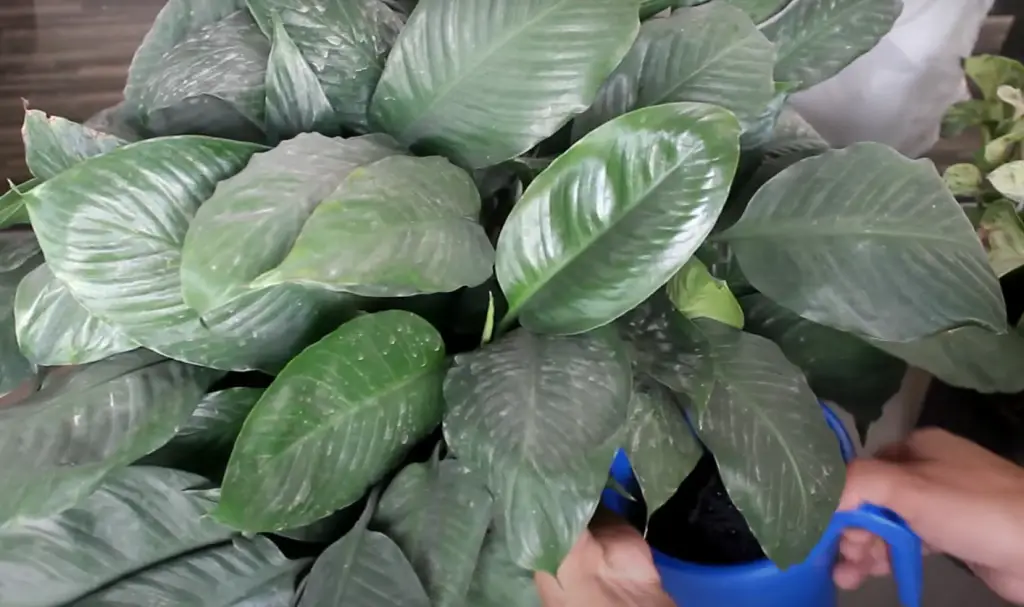
It is also important to make sure the soil is able to drain properly. If there isn’t enough drainage holes in your pot, then you may need to add some extra ones. Alternatively, you could use a pot with an integrated drainage system such as one that has a built-in water reservoir at the bottom.
FAQ
Will an overwatered plant recover?
Yes, if you take the necessary steps to help your plant recover from overwatering. This includes reducing watering frequency, removing affected leaves and stems, providing enough air circulation and using a pot with adequate drainage holes. With the right care and attention, most plants should be able to recover from an overwatering incident.
How do I bring my peace lily back to life?
The best way to bring your peace lily back to life is by following a good care plan. This should include reducing the amount of water you give it, keeping an eye on humidity and temperature levels, and providing adequate air circulation around the roots. Additionally, make sure you use a pot with enough drainage holes so that water doesn’t accumulate at the bottom of the pot. With the right care and attention, your peace lily should be able to recover and thrive.
How can I fix an overwatered plant?
The first step to fix an overwatered plant is to reduce the amount of water you give it. You should also remove any damaged leaves or stems and ensure that there is adequate air circulation around the roots. Additionally, make sure you are using a pot with enough drainage holes so that water can drain properly from the soil. With these steps, your plant should be able to recover from overwatering.
How do you dry overwatered soil?
The best way to dry overwatered soil is by allowing it to sit in the pot for a few days. During this time, make sure there is adequate air circulation around the roots and keep an eye on the humidity and temperature levels. Additionally, you should avoid adding more water until the soil has had a chance to dry out properly. With these steps, your soil should be able to dry out and you can then resume regular watering.
What are signs of root rot?
The signs of root rot are often wilting leaves, yellowing foliage and discoloration on the stems. Additionally, when you touch the soil it may feel mushy or soggy. If you notice any of these signs in your plant then it is important to take action quickly as root rot can spread rapidly if left untreated.
Will root rot fix itself?
No, root rot will not fix itself. It is important to take action quickly in order to save your plant from further damage. This includes reducing the amount of water you give it, removing any affected leaves or stems and improving ventilation around the roots. Additionally, make sure that there are adequate drainage holes in your pot so that water can drain properly from the soil.
How do I know if my peace lily has root rot?
The signs of root rot can vary depending on the stage of development. Generally, you should look for wilting leaves, yellowing foliage and dark discoloration on the stems. Additionally, when you touch the soil it may feel soggy or mushy. If you notice any of these signs in your peace lily then it is important to take action quickly as root rot can spread rapidly if left untreated.
Useful Video: How to SAVE PEACE LILY | Main Problems and How to Fix Them
Conclusion
Caring for a Peace Lily can be rewarding and enjoyable. With the right care and attention, your plant should be able to stay healthy and grow strong. However, it is important to keep an eye on how much water you give it as overwatering can cause root rot or other problems with the plant.
If you do notice any signs of overwatering or root rot in your Peace Lily, then take action quickly as this can help to prevent any further damage. With a little bit of patience and dedication, you should be able to keep your Peace Lily looking and feeling its best.
Good luck! And happy gardening!
References:
- https://www.evergreenseeds.com/overwatered-peace-lily/
- https://thehealthyhouseplant.com/what-to-do-when-youve-overwatered-your-peace-lily-step-by-step/
- https://gardenforindoor.com/how-to-fix-an-overwatered-peace-lily/
- https://gardenine.com/overwatered-peace-lily/
- https://plantophiles.com/plant-care/overwatered-peace-lily/





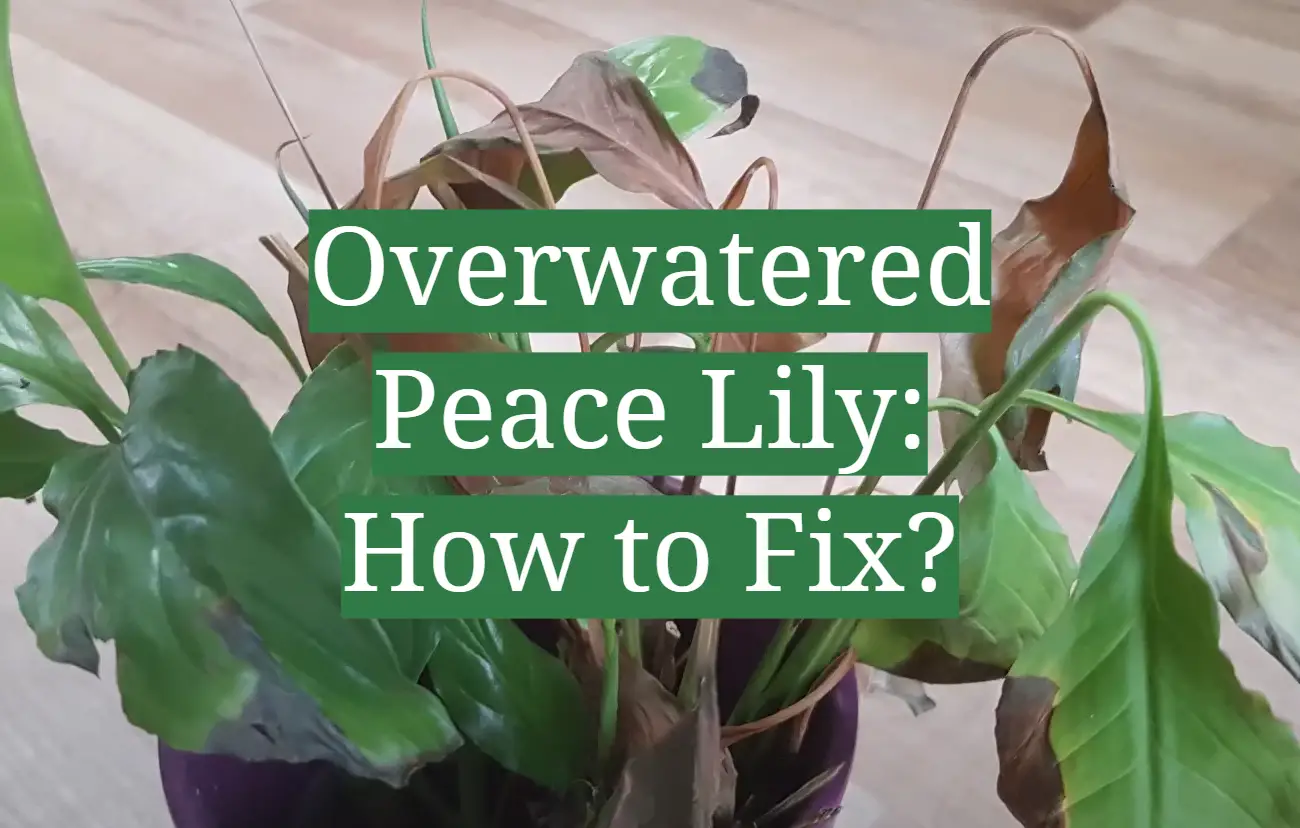

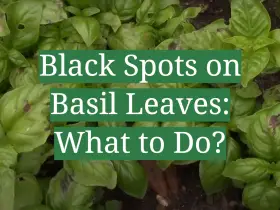


Leave a Reply
View Comments